In this FAQ article we explain what the Google Keyword Planner is, what limitations it has, and why there are differences in the search volume figures between SISTRIX and Google.
With the Keyword Planner, Google offers its advertising customers a tool for researching and evaluating keywords. One of the decisive metrics for the evaluation of keywords is the number of searches (search volume, traffic) that take place for this keyword each month.
While you read the following information here, it is important to keep in mind why Google offers the Keyword Planner: Google wants to sell more ads. The tool exists to encourage advertisers to spend more money on advertising. The Keyword Planner is not a tool for evaluating SEO metrics, even if it is often used for this.
Let’s go straight into the differences between SISTRIX and the Keyword Planner:
Difference # 1: traffic intervals, no exact values
Enter one or more keywords in the Google Keyword Planner and the result is a table with the search volume of the keywords as shown here with the example keyword “sistrix”:
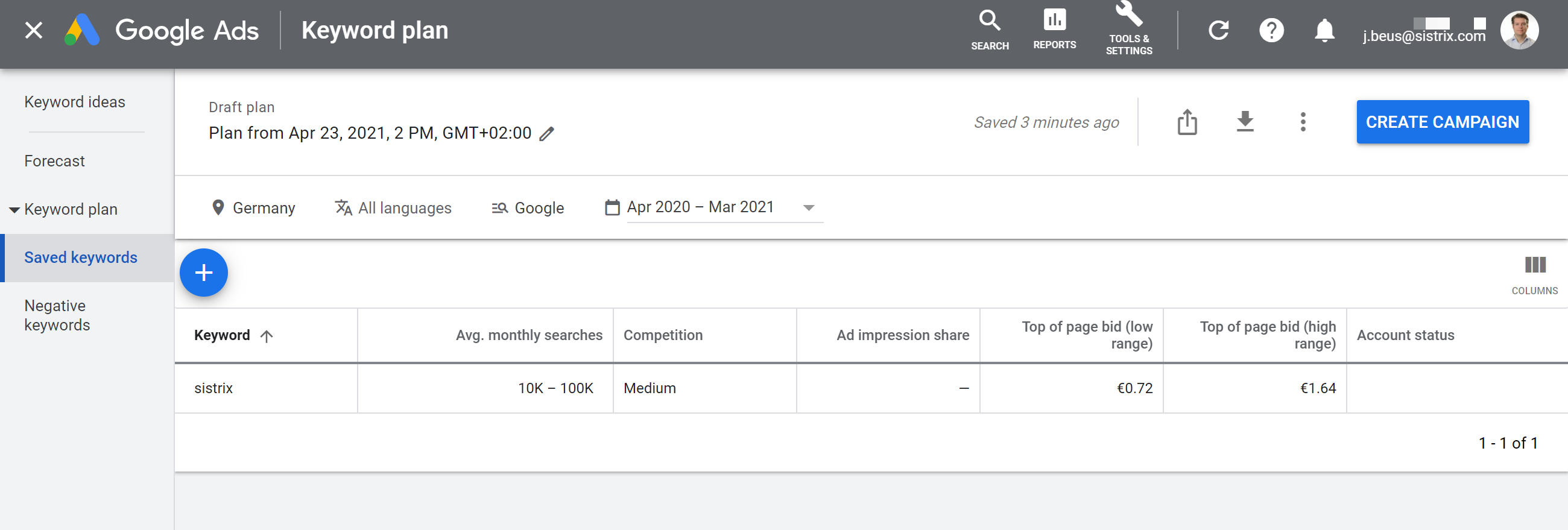
The first problem is immediately obvious: the Google Keyword Planner only provides the very wide range of 10,000 to 100,000 searches per month for the keyword “sistrix”. For the user, however, it makes a big difference whether there are 10,000 or almost 100,000 searches per month.
If you use a Google Ads account that is also being actively used to book ads (the exact amount is unknown, but it will be a few hundred euros per month), the information looks more detailed at first glance;
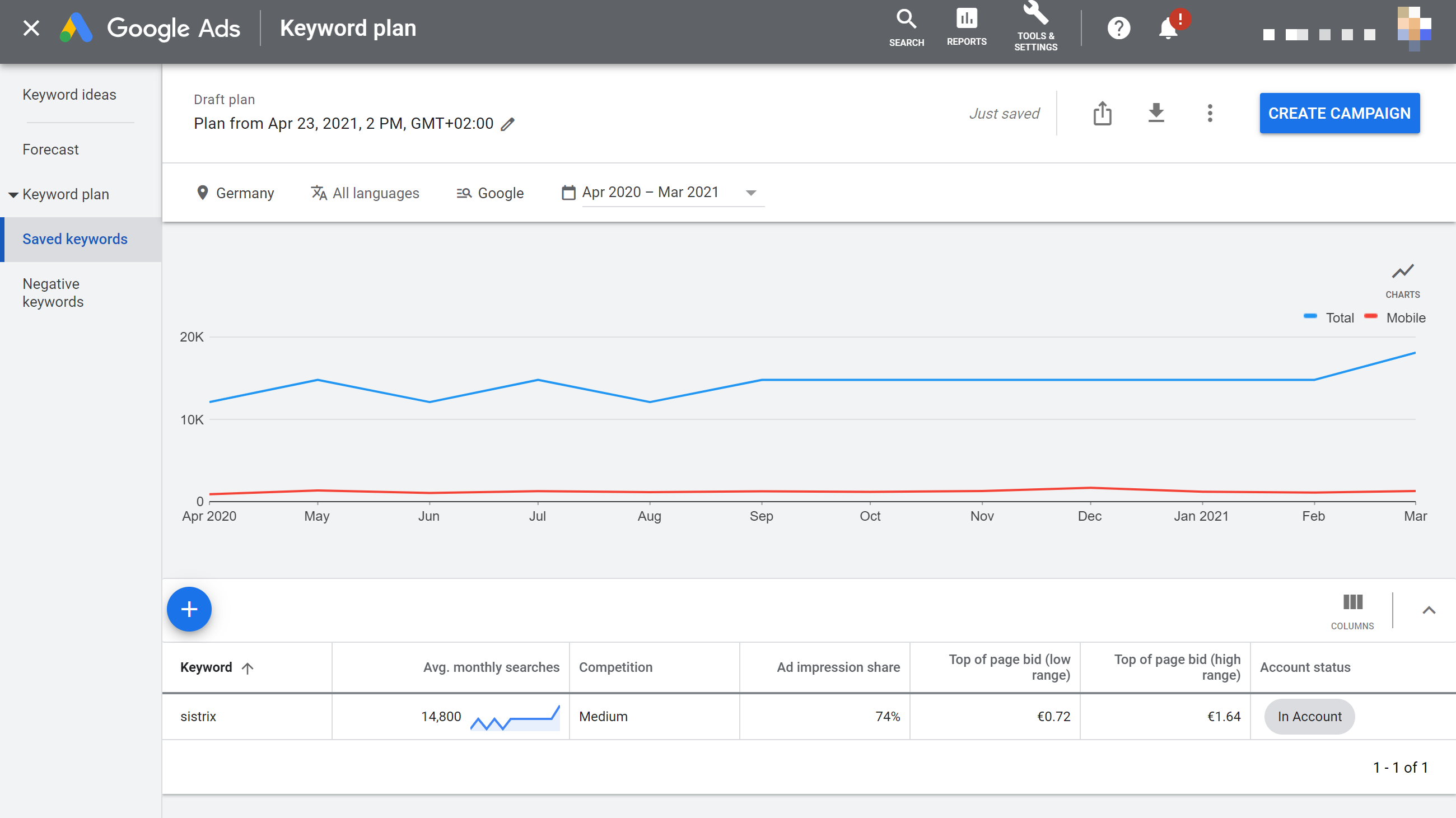
But the first impression is wrong: even if the number (14,800) looks like an exact search volume, it’s still only a bucketed range for the given time interval. As you can already guess from the time graph above, the Keyword Planner does not deliver exact numbers to paying Google Ads customers, but only slightly more precise ranges.
In this case, we have 12,100, 14,800, and 18,100 as the presumed mean of the date intervals returned by Google. In total, Google provides around 50 different ranges. The larger the search volume of the keyword, the less precise the classification in the respective range is.
For the sake of completeness, here is the output of the search volume for the keyword “sistrix” from SISTRIX itself: an exact search volume, no intervals, no groups. In addition, we show directly how many of these searches actually land on organic search hits:
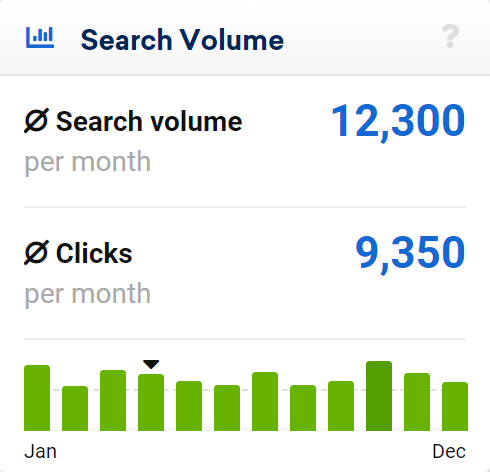
Difference # 2: grouping keywords
As mentioned at the beginning, the Keyword Planner is a product to support the sale of Google Ads. This can also be seen in a rather unknown but very important behavior: the desired keyword grouping.
Google has an interest in displaying the highest-priced ads possible. One way to achieve this is to display high-priced ads even if the search term does not exactly match the keyword that the advertiser booked. An example (using a german keyword example for waterbeds):
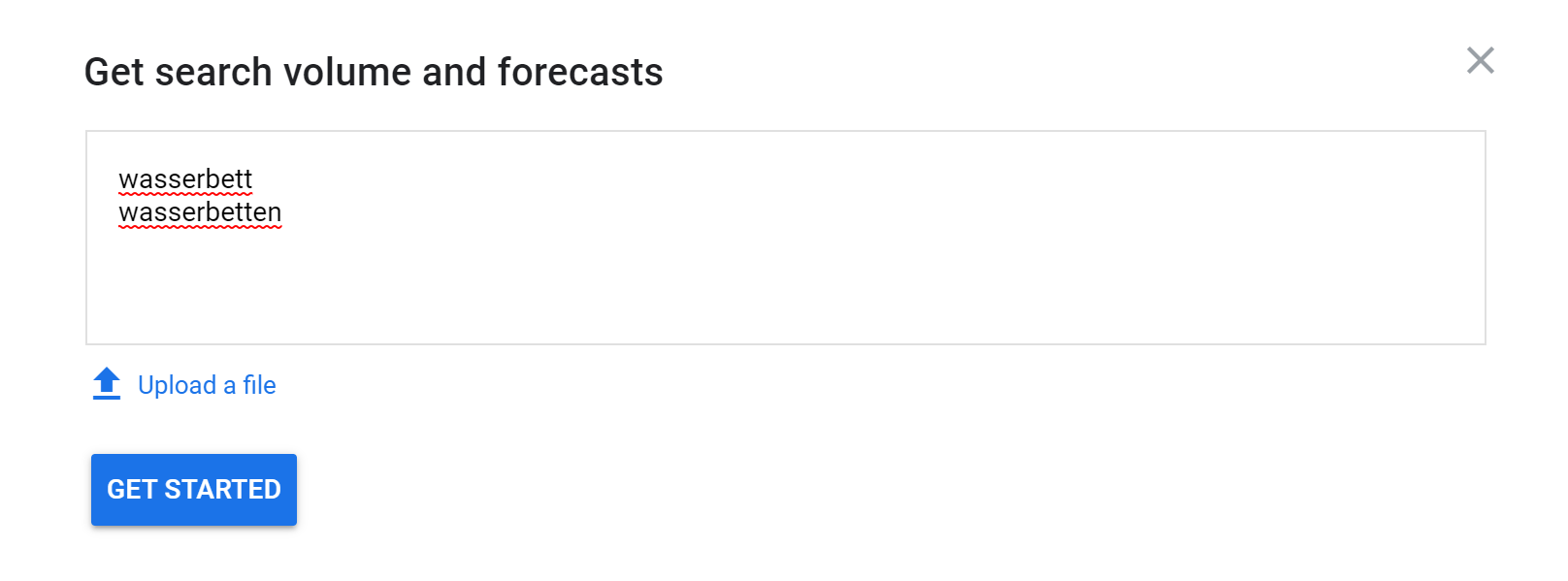
We put both the two keywords in the Keyword Planner to check the search volumes for singular and plural. The result:
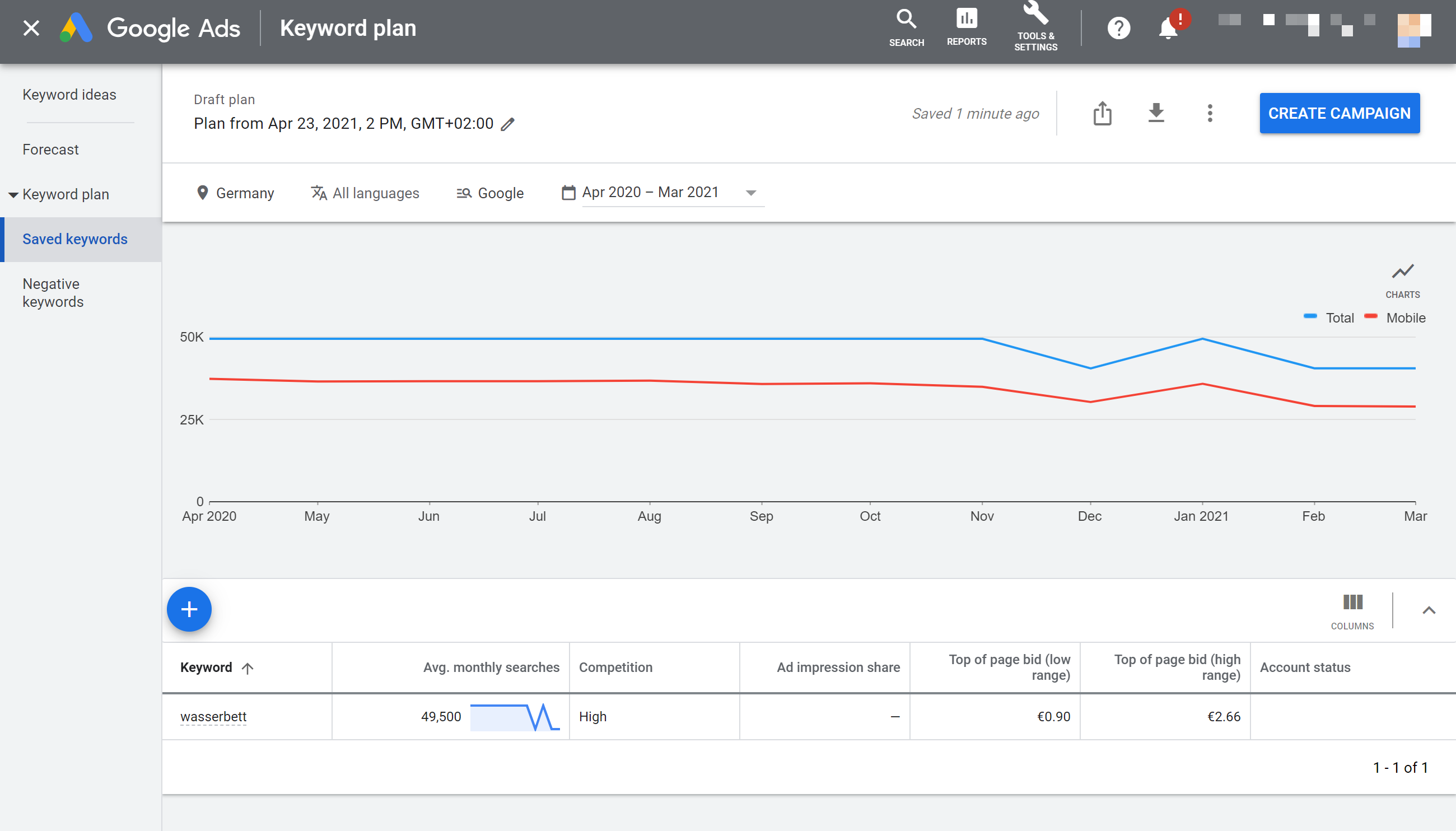
The Keyword Planner does not (as expected) show the respective search volume for the two keywords, but only shows one line. If you click on the underlined keyword, the reason becomes obvious:
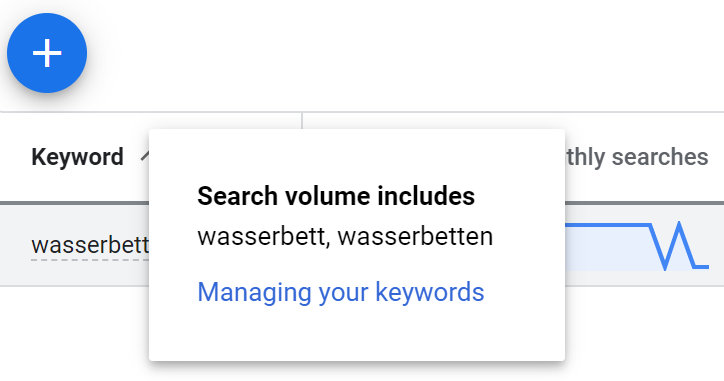
As with the ad display, Google has grouped these two keywords together and treats them as one keyword. The displayed search volume relates to both keywords together. How large the proportion of each individual keyword is, cannot be analysed with the Keyword Planner.
A look at SISTRIX shows how important it is to have this data. For the keyword “wasserbett” (EN: water bed) we show an annual average of 21,100 monthly searches, for the keyword “wasserbetten” (EN: water beds), however, only 5,050. Since the SERPs also differ significantly, it is clear that expensive mistakes can be made here at the start of an optimisation project.
Difference # 3: Contents of a group are unknown
Anyone who payed attention the numbers in the last example (Google: 49.5k, SISTRIX 21.1k + 5k) will ask: where is the remaining search volume? And so we come to the next ‘feature’ of the Keyword Planner: the exact contents of a keyword group are unknown. An example, again using our German water bed keywords:
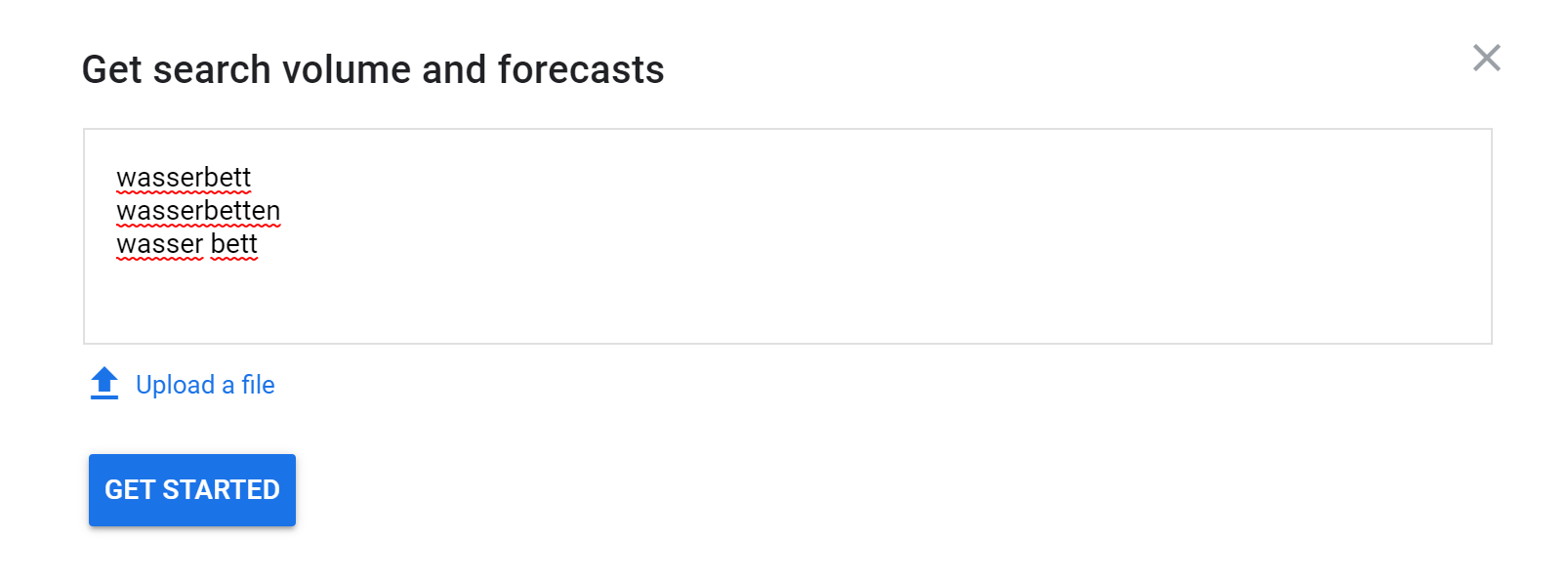
To our two keywords from just now (waterbed, waterbeds) we’ve added another: with the space in the middle a popular German misspelling is now added. The result in the Keyword Planner:
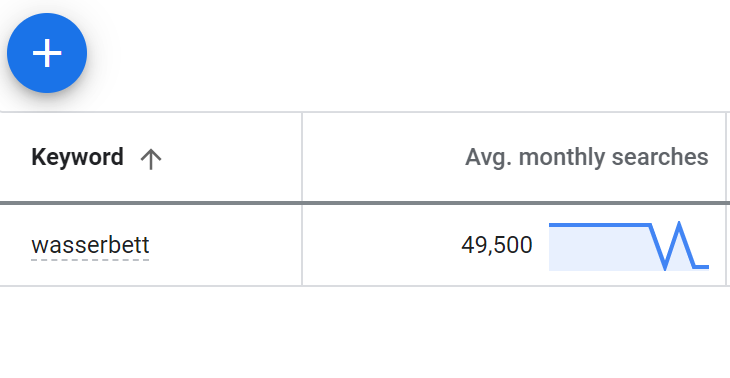
Nothing changes. The search volume of the keyword group with the three keywords is exactly as high as it was with the two keywords. If we look at the details, however, Google confirms that all three keywords are in the search volume:
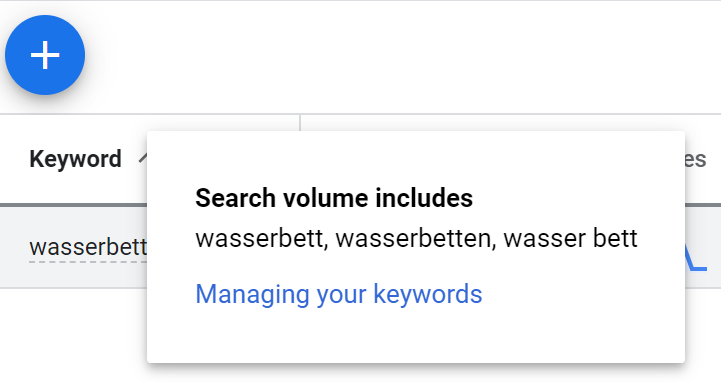
With the Keyword Planner, we not only cannot analyse the search volume of individual keywords (where Google combines them into a group), we also do not know which keywords are included in this group.
From an advertiser’s point of view, this is not a problem: the ads are displayed for all versions of the keyword. From the point of view of SEO, however, this is a big problem: Optimising while flying blind, without knowing traffic numbers. Incidentally, here is the search volume for “wasser bett” from SISTRIX.
Bonus difference: groups without groups
As if that weren’t complex and tricky enough, Google has thrown a bonus into to the Keyword Planner. Here, too, a simple example for clarification: we enter both “rtlnow” , a German streaming service that uses the English word “now” and the popular misspelling “rtlnau” and get this result:
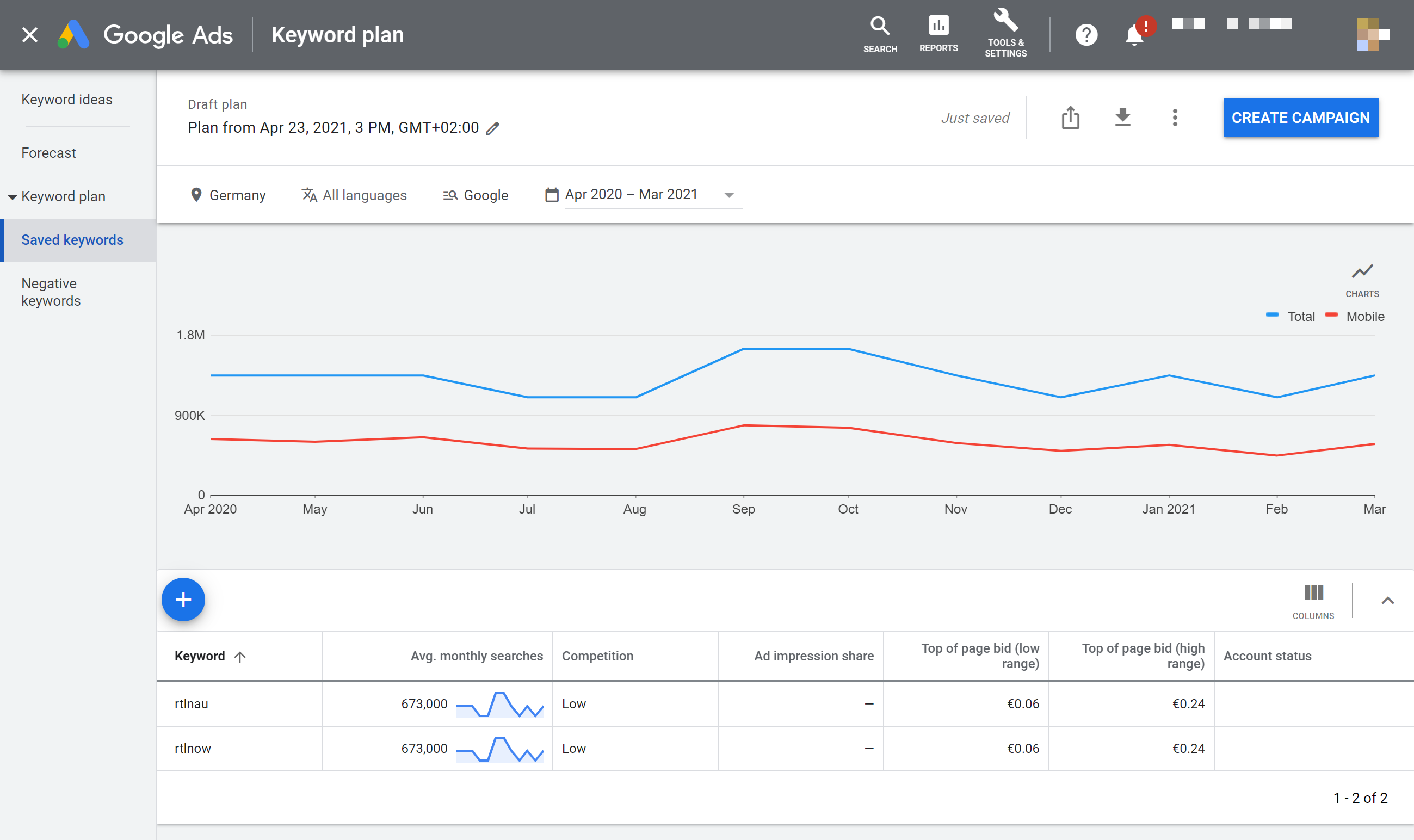
After all that we saw of the behavior of the Keyword Planner in the last few paragraphs, the expectation would now be that Google would group these two keywords together. But it’s not that easy.
Here Google shows both keywords separately, but apparently shows the common search volume for both keywords. If you only enter the misspelling “rtlnau”, you will get a search volume of 673,000 searches per month without any indication that it is a keyword group that also includes other keywords.
Summary
Did you manage to understand all the examples and subtleties up to this point? Congratulations! As we have seen, the topic is much more complex than it appears at first glance. In essence, the fact remains that the Google Keyword Planner is a help for advertisers, but its use for SEO clearly shows weaknesses:
- The Google Keyword Planner does not return exact search volumes. Even the numbers that appear to be exact values are just bucketed averages.
- Keywords are grouped together. The Keyword Planner only shows the total search volume for this group. The proportion of individual keywords in the group cannot be determined.
- It is unclear which keywords the Google Keyword Planner groups together. The search volume of a group can therefore theoretically be distributed over any number of keywords.
- The Google Keyword Planner is also inconsistent with the ‘grouping’ logic: with some keywords there is no grouping, but despite this, the overall traffic of a group is shown.
The take-away: The Google Keyword Planner figures offer so many pitfalls, inconsistencies and inadequacies that they can only serve as a first, very rough guide.